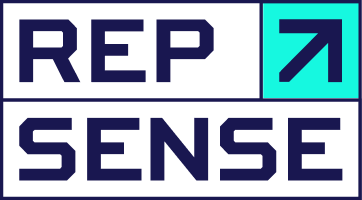Data-driven Communication: How To Use AI To Drive Communications Strategy?
In his book "Traffic," online press professional Ben Smith vividly describes a moment that forever changed online media. Once we started tracking web traffic, the media collided with data, which changed the content, format, quantity, and timing of publishing.
The communications industry is going through a similar change today. The main objective of business communication is to create and maintain a sustainable environment for companies' activities and relationships with different stakeholders. However, while the number of stakeholder interactions and media channels increased drastically, the communication industry was slow to change.
Tons of data sources – lack of data-driven insights
Today, communication experts mostly use web traffic, performance marketing analytics, and content metadata to gather insights about their campaign's success. It is a good start, but it doesn't provide a complete picture of brand reputation, as most channels only share data that is convenient for their sales objectives, not for your company's message.
That is why we track and respond to Facebook reviews but often miss reviews on Google Maps, we admire the publication of a small regional media outlet but overlook the negative results of an internet search on the company, we pull the metrics of reactions to promoted social media posts into our KPIs, but ignore the number of searches on the brand. Such data is not complete, and we end up tracking only partial metrics.
When we talk about AI in communications, the ChatGPT window is the first thing that pops up to mind. However, if the sales or marketing experts rushed to use the AI-driven tools, communicators seemed to spend almost the entire year actively denying its existence or proudly ignoring it.
The generating capacity of AI is still very limited. It can help you navigate the world of ideas faster, help you summarise and write formal letters, translate, edit, suggest frameworks, and even create (unoriginal) books or poems. On the other hand, AI tends towards banal expression, makes up claims, and gets lost among too many variables. As anyone who has created texts with the help of AI knows, the professional use of it requires so much maintenance that sometimes it is easier to just do it yourself.
But maybe we need another perspective to consider?
Poorly applied AI does not allow leveraging data
ChatGPT is neither the first nor the last successful artificial intelligence system. Algorithms have been trained on customer data in the engineering, finance, and logistics sectors for decades. Their primary use was not to generate new ideas or innovate – their function was to optimize processes and take care of the most mundane data analysis tasks. The first AI algorithms helped to understand and evaluate the data companies already had and only later started to develop practices that helped them improve their performance.
Let's take a look at a couple of examples. Trading platforms continuously analyze the micro-movements in the market and only then propose simple solutions, which an analyst constantly monitors. The Waze app continuously analyzes travel routes, stops, and obstacles, considering the time of day or the time of year before suggesting the best way to navigate traffic. In reality, we don't necessarily need AI to create autonomous cars – we simply want it to help us analyze data that helps us reach our destination faster.
The social sciences, including the communications industry, follow a similar path in adopting AI. A communication manager has a very responsible and delicate job, where they must consider the company's background, product or service offerings, the content of communication materials and it's visualization, marketing strategies, personal relations, finances, and audiences – all while moving extremely fast. It is a job with so little time to think that reflection is possible only once a month or sometimes once a year. Generative AI here could be a fun and handy assistant. Still, the main advantage of big data models is the ability to create a system for planning and evaluating content performance, not its ability to generate content.
AI allows you to analyze large amounts of information automatically, gain instant insights, and, as in the case of Waze, adjust your route immediately rather than months or years later. Before we generate endless walls of text that nobody will read, let's have a clear idea of the audience, the channel, the format, and the topic, and analyze what kind of content would be the most impactful. Communication is always about taking action – but using AI can and should be done with a clear purpose in mind.
A more common use of data is inevitable. What will it look like in the near future?
Too much or too little sources for data analytics?
Communication already uses data, some readers will say. What's more, there is too much of it! And they will be right: sophisticated market research companies already track brands and their reputations. Media monitoring companies scan multiple media channels and keep track of brand mentions. Social media companies provide little information on organic traffic but are happy to share detailed advertising data, including metrics such as impressions and total engagement. Professional media outlets also provide data on their audiences and, in some cases, readership data for their articles.
But others might argue that we don't have enough data. And they would be right, too. Media monitoring companies provide clients with an analysis that public relations theorist James E. Grunig defined in the early 1970s, based on the experience of telecommunications giant AT&T. Typically, this analysis compares the number of mentions compared to the market, a binary indicator of the favourability of the articles, and some target audience data.
Sometimes, it includes the number of mentions of the key spokespeople or brand ambassadors. However, there is no data about the content, the key themes, or other important factors influencing the real value of the content. Until recently, the impact of people's online searches was generally a bright white spot on the ever-growing map of communication forms.
To sum up, communication experts can receive a lot of information about communication channels and content distribution, especially about advertising and marketing campaigns. Meanwhile, a large part of the decisions made in the communication discipline are related to the content that resonates, textual metadata, and context—and we lack generalized information about all of them.
So, we face five problems:
Data gaps – a lack of definitive data about content quality, positioning, and context.
Data overload – too much irrelevant information about the audience and their actions (since these indicators do not always directly connect to the communication team's KPIs.)
Data asymmetry – in many cases, advertisement platforms focus their professional analysis on metrics that benefit their platforms.
Lack of skills and time – communicators do not know how to analyze data, review trends, and use these newly found insights in their work.
Lack of practice – even with clear insights, not everyone knows what action to take, and therefore, does not change their behavior.
Combining intuition with data-driven analysis
Nobel laureate Daniel Kahneman has observed that humans have evolved a remarkable ability to intuitively assess social relationships and situations. However, we can't do the same for statistics or large numbers.
Communicators are expected to have that keen instinct and be able to scan information before us, quickly analyze the situation, and come up with the most appropriate response. Then, implement this response with a team, coordinate it with business leaders, get in touch with journalists or contact supporters on social media, and then monitor the reactions to your campaign. Every content distributor – journalist or social media follower – requires personal attention, and building these relationships takes up most of the time.
In the absence of useful data, communicators pay attention to their intuition, which, at best, covers one-fifth of the overall effectiveness of the communication. At the same time, it only works at one-fifth of its potential. However, in a world with so many different communication tools and content creators, this usually means that the campaign does not reach its full potential and does not necessarily create the desired snowball effect.
Unfortunately, many organizations spend months preparing high-quality communication strategies but leave them to gather dust in the drawer instead of spending the necessary time and resources to properly implement them. If the only way to measure your results is by tracking the total number of articles published or their reach, you will never clearly understand the impact such a strategy could have on your brand's reputation.
Sometimes, such ambiguity is useful. If things go wrong, you can always fall back on the fact that you never had a clear list of objectives in the first place. But it can also be more dangerous, especially if you want to get your budget approved quickly or have more influence in your organization. Sometimes, this need to provide measurable results makes us use data from another area, such as performance marketing or sales. But you can only get precise insights if you use the correct data, so we need more than a smart shortcut to achieve our objectives.
This is nothing new. Data revolutions have transformed almost all company functions over the last few decades. Marketers have learned to measure the effectiveness of promotional communications and understand the factors that influence conversions; salespeople have gotten used to taking care of customers' lifetime value, and retention specialists have learned to provide the right incentives at the right time to ensure their clients stay with them longer. This revolution has so far bypassed communicators because mathematicians have been unable to effectively calculate the impact of content. At the same time, manual communication analysis is so expensive that it is only purchased for special occasions or during major crises.
But now there are no more excuses. Vector artificial intelligence and ChatGPT-like big language models make it possible to combine communicators' intuition with precise data quickly and on a massive scale.
How do we optimize the right data for communication?
Well, we have prepared an in-depth handbook about data-driven communication strategies that defines:
The three dimensions of communications that could use data-driven analysis
Ways to accurately measure communication data
Using content, context, and distribution channels for the best results
Download your copy here:



